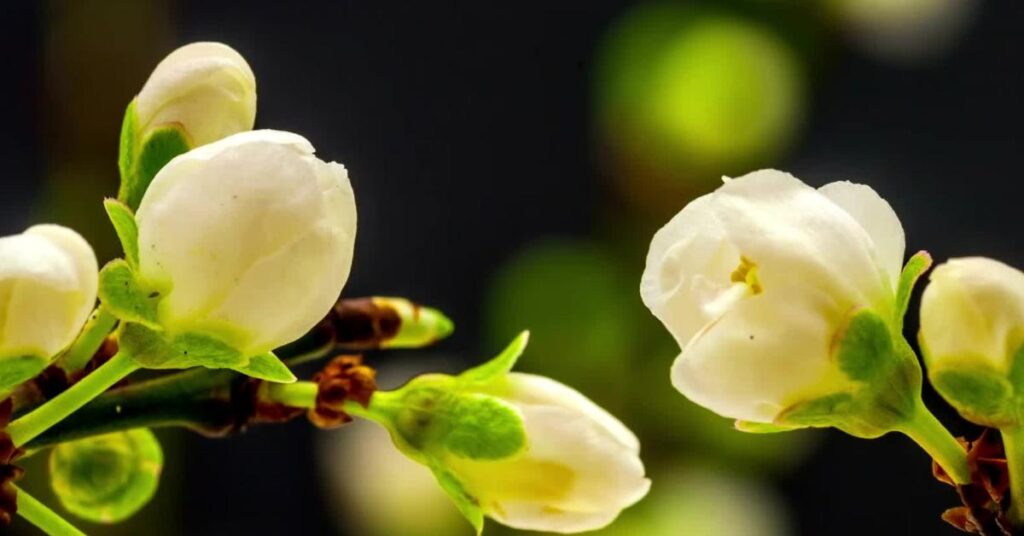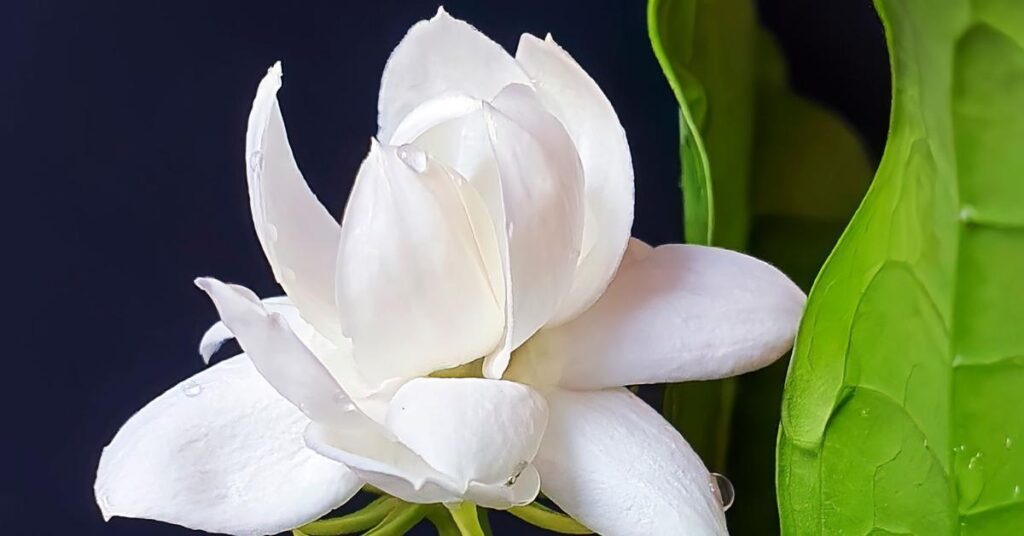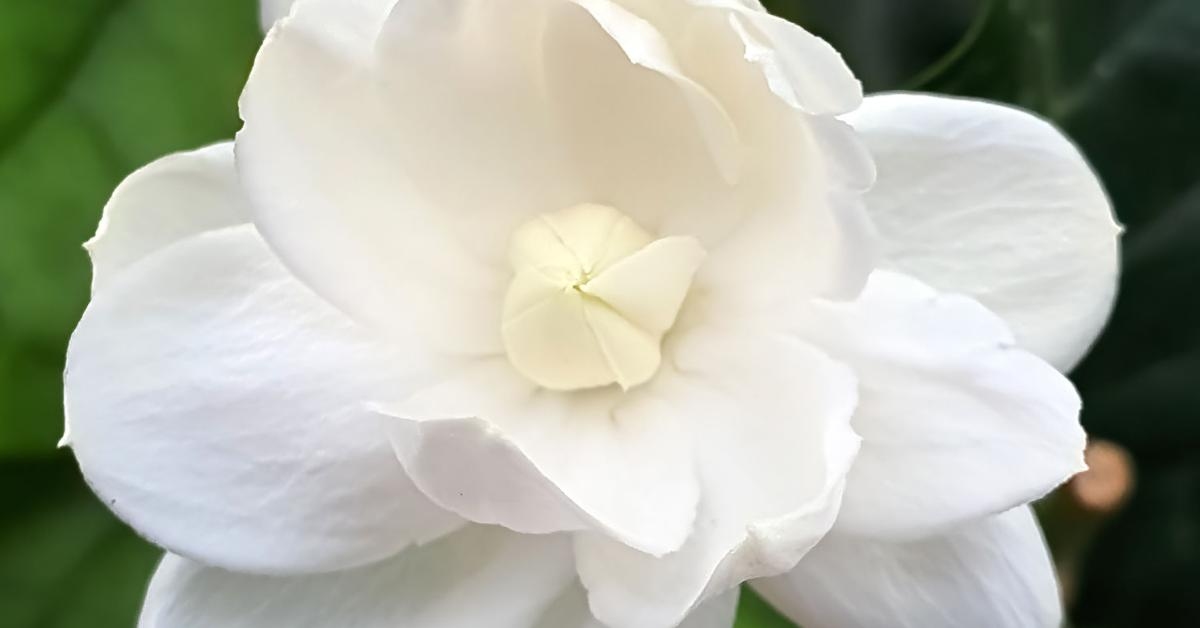The Belle of India Jasmine Plant (Jasminum sambac ‘Belle of India’) is a stunning, fragrant flowering plant that can bring a touch of exotic elegance to any garden or home. Known for its long, slender, white petals and sweet aroma, this jasmine variety is highly prized among garden enthusiasts and plant lovers. This guide offers detailed insights into the care and cultivation of the Belle of India Jasmine, ensuring that even beginners can enjoy the beauty and fragrance of this exquisite plant.
What is the Belle of India Jasmine Plant?
The Belle of India Jasmine is a type of Jasminum sambac, a species within the Oleaceae family. It is characterized by its lush, green foliage and intensely fragrant, white flowers that bloom in clusters. Unlike some jasmine varieties that are climbers, Belle of India tends to grow as a bushy shrub, making it suitable for pots and as a free-standing plant.
Distinct Features
The Belle of India has a few distinct features worth looking at.
Flowers
The Belle of India Jasmine is renowned for its stunning blooms, which are not only visually captivating but also olfactorily pleasing. Each flower features elongated, tube-like petals that unfurl into a star-like shape, exuding a heavy, sweet fragrance that becomes even more potent as the sun sets. The fragrance of these flowers has been described as intoxicating, drawing not only humans but also pollinators like bees and butterflies to the garden. Their ability to bloom for several months, from late spring through the fall, ensures a long-lasting display of elegance and aromatic delight.
Leaves
Accentuating the beauty of its flowers are the Belle of India Jasmine’s dark green, glossy leaves. These leaves are oval-shaped and provide a lush, vibrant backdrop that makes the white flowers stand out even more. The contrast between the delicate white blooms and the robust green foliage adds a depth of texture and color to any garden setting or indoor space.
Growth Habit
This Jasmine variety exhibits a bushy, somewhat sprawling growth habit, making it an excellent choice for both ground cover and container planting. When given adequate care and suitable growing conditions, the Belle of India Jasmine can reach heights of up to 5 feet. Its growth pattern is somewhat controllable through pruning, allowing gardeners to shape the plant to their liking, whether it be a more compact shrub or a slightly taller, more spread-out plant.

Ideal Candidates for Belle of India Jasmine
Let’s find out who the Belle of India is ideal for.
Gardeners with Limited Space
Due to its manageable size and adaptability to container growing, the Belle of India Jasmine is an ideal choice for those working with limited garden space. It thrives equally well in outdoor gardens or on balconies and patios, making it perfect for urban gardeners or anyone looking to add a touch of greenery to a smaller area.
Fans of Fragrant Plants
For those who appreciate the sensory aspect of gardening, the Belle of India Jasmine’s powerful fragrance offers an alluring addition to any garden or home. Its scent enhances outdoor living spaces and can fill indoor areas with a sweet, calming aroma, making it a favorite among fragrant plant enthusiasts.
Plant Enthusiasts Looking for a Challenge
While the Belle of India Jasmine is not overly demanding in its care requirements, it does present a rewarding challenge to gardeners looking to expand their horticultural skills. Its need for specific growing conditions and regular maintenance offers an engaging experience for those wishing to delve deeper into the nuances of plant care.
Optimal Growing Conditions
Here are the optimal growing conditions for the Belle of India.
Light Requirements
The Belle of India Jasmine performs best in full sun to partial shade conditions. A minimum of 4-6 hours of direct sunlight daily is crucial for the plant to flourish and produce its characteristic fragrant flowers. However, in extremely hot climates, some afternoon shade can help protect the plant from excessive heat stress.
Temperature and Humidity
This Jasmine variety prefers warm temperatures and thrives in moderate to high humidity environments. It is sensitive to frost and cold temperatures, making it imperative to provide protection from cold drafts and frost in cooler climates. In regions where temperatures drop significantly, growing the plant in a container that can be moved indoors during winter is advisable.
Soil Conditions
A fertile, well-draining soil with a pH level between 6.0 and 7.5 creates the ideal environment for the Belle of India Jasmine. The addition of organic matter, such as compost or well-rotted manure, can enhance soil fertility and structure, promoting healthier growth and blooming. Proper drainage is critical to prevent waterlogging, which can lead to root rot and other issues.
Planting Instructions for Belle of Indica
Let’s find out how to plant Belle of India Jasmine.

Choosing the Right Spot
Select a planting location that meets the Belle of India Jasmine’s light and soil requirements. For container planting, choose a spacious pot with adequate drainage holes to accommodate the plant’s growth.
Preparing the Soil
Enhance the soil by incorporating organic compost or well-rotted manure, which will provide essential nutrients and improve soil structure. Ensure the planting area or pot offers sufficient drainage to avoid waterlogging.
Planting Process
- Dig a Hole: The hole should be twice the width of the root ball and of the same depth to ensure the plant has enough room to establish.
- Position the Plant: Carefully place the Belle of India Jasmine in the center of the hole, ensuring the top of the root ball is level with the surrounding soil surface.
- Backfill: Refill the hole with soil, gently tamping down around the base to remove any air pockets.
- Water Thoroughly: Immediately water the plant to settle the soil around the roots and provide necessary hydration for establishment.
Care Tips for the Belle of India Jasmine
Let’s go over some crucial tips that will help you take much better care of Belle of India Jasmine
Watering
Maintain consistent soil moisture, especially during dry periods, but be careful not to overwater. The soil should feel moist to the touch but not saturated. Reduce watering frequency in the winter when the plant’s growth slows down.
Fertilizing
Apply a balanced, water-soluble fertilizer every four to six weeks during the growing season to support healthy growth and abundant flowering. Avoid over-fertilizing, which can lead to poor bloom production and foliage problems.
Pruning
Prune the Belle of India Jasmine in early spring to remove any dead or damaged growth and to shape the plant. Regularly deadheading spent flowers can also encourage more blooms to form.
Pest and Disease Management
Monitor the plant for signs of common pests such as aphids and spider mites. Use appropriate organic or chemical treatments as necessary to control infestations. Good cultural practices can help prevent most pest and disease issues.
Overwintering
In regions with cold winters, protect outdoor plants with mulch or bring container-grown specimens indoors to a cool, bright space. Reduce watering and fertilizing during this dormant period to help the plant rest.
Final Thoughts on Caring for Belle of India Jasmine
The Belle of India Jasmine is a truly remarkable plant that, with the right care, can be a stunning addition to any garden or home. Its care requirements, while specific, are manageable and well worth the effort for the beauty and fragrance it adds to your space. By following this comprehensive care guide, gardeners of all levels can successfully cultivate and enjoy the enchanting Belle of India Jasmine. Whether you’re a seasoned gardener or new to plant care, the rewards of nurturing this exquisite jasmine variety are immense, offering not only aesthetic appeal but also a sensory delight unlike any other.
